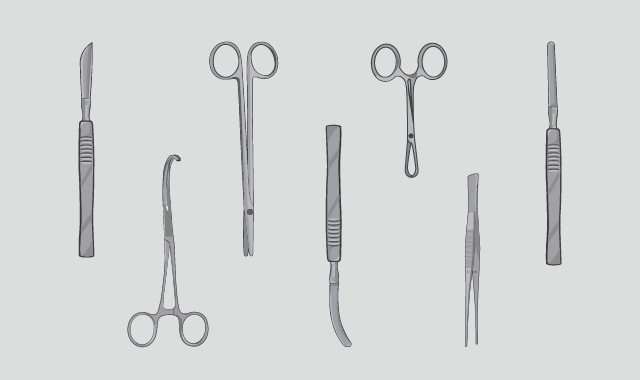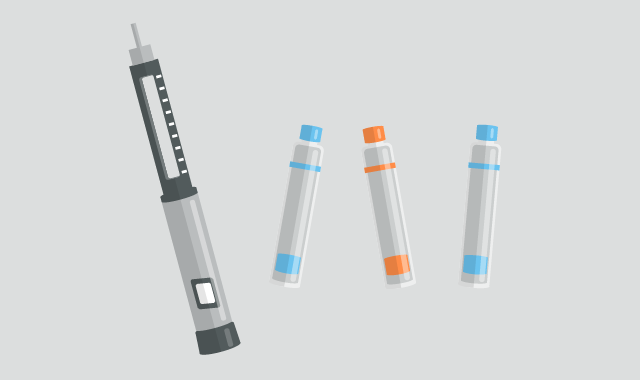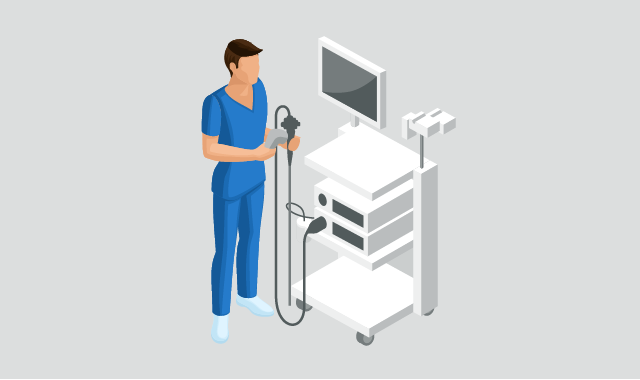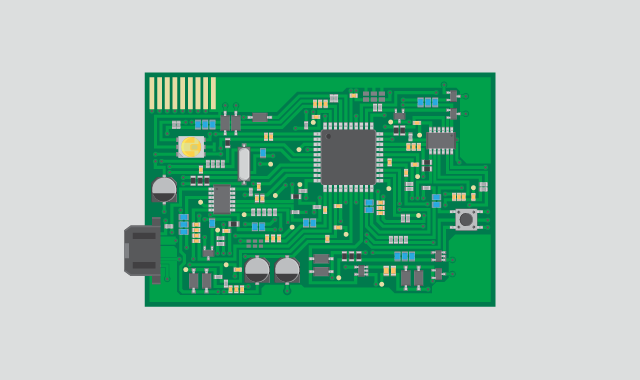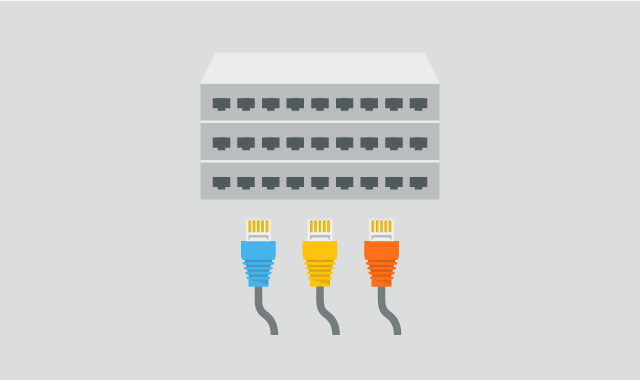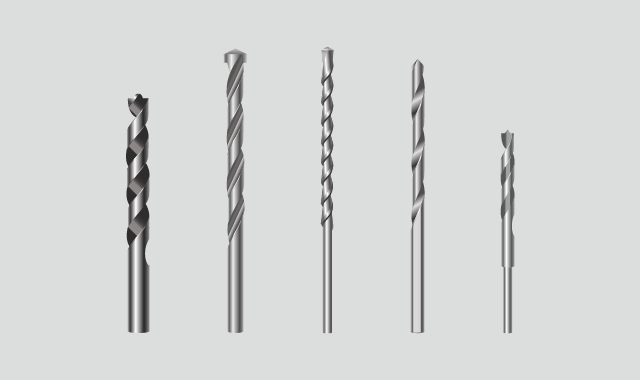RFID by Use Case
RFID has an ever-growing list of use-cases, many of which have revolutionised industry processes from shop-floor management to production and post-sale customer care.

Industry 4.0
operations
Industry 4.0 - the 4th industrial revolution - is the automation and digitisation of manufacturing. Thanks to technologies, such as IoT and RFID, objects and machines become intelligent and capable of communicating without human interference.
RFID technology connects components, processes and machines providing automated identification of the objects and real-time information on the entire production cycle. Any irregularities, errors or setbacks in the production can be identified immediately improving the production rate, efficiency and safety.
- RFID advantages
-
- Automated identification
- Realtime location tracking/monitoring of products, assets and business processes
- Complete production visibility
- Identification and reduction of irregularities, errors and non-conformities.
- Increase in production rate and efficiency.

Distribution &
logistics
Real-time visibility of goods improves the efficiency of the whole supply-chain. Tagging every box, pallet or shipping crate with an RFID label enables manifold opportunities in the DC as well as during transportation.
Detailed RFID tracking and transparency allow the DCs to optimize the processes and reduce errors and shrinkage. Thanks to increased inventory accuracy and optimized product flow, the service level is improved With the entire logistics process completely transparent, it is possible to track the current status of all tagged products in transport and in the warehouse.
- RFID advantages
-
- Inbound/outbound flow optimization
- Loading/unloading time reduction
- Improved inventory accuracy
- Improved packing accuracy and productivity
- Shelf life management from FIFO to FEFO
- Reduced losses of logistics assets
- Reduced loading and unloading time

Asset
tracking
Keeping track of every single asset is a real challenge in many businesses. Regardless the industry, RFID enables efficient real-time, accurate and punctual asset tracking.
Equipment, machineries, instruments, tools, packaging. All assets can be tracked and managed in order to reduce losses, optimize their utilization and maintenance. The punctuality of outgoing and incoming assets is accurately recorded, and losses, misplacement and inventory differences are easily reduced.
- RFID advantages
-
- Optimized asset tracking
- Optimized asset utilization and maintenance.
- Improved real-time asset location and findings
- Reduction of losses and misplacements
- Improved inventory accuracy

Supply chain
management
A major challenge faced by modern global companies is the difficulty to accurately and efficiently track components, WIP and final product flows and inventories through the extended supply chain. RFID can provide end-2-end real-time visibility, traceability and control, significantly optimizing the management of the entire network.
The technology also enables collaborative models such as vendor managed inventory and continuous replenishment. Thanks to the visibility generated by RFID, the vendor can accurately monitor the customer’s stock levels and replenish solely when necessary thus trimming stock levels and costs.
- RFID advantages
-
- End-2-end real-time visibility
- Supply chain optimization
- Vendor-managed inventory and replenishment
- Optimization of supply chain partners’ collaboration
- Stock reduction
- Application Example

Cold chain
management
RFID makes it possible to monitor the temperature of products during their distribution, ensuring that they are transported and stored within a certain temperature range. Thanks to real-time information and alerts, RFID makes it possible to automatically monitor the temperature at all stages of the supply chain and immediately intervene in case of errors.
RFID allows to real-time monitor the temperature of a single product or of specific environments (tracking the transit of the products when moving from one environment to the other).
- RFID advantages
-
- Real-time temperature monitoring at all stages of the supply chain
- Real-time alerts
- Reduction of shrinkage due to cold chain breaks

Track & trace and
regulatory compliance
Together, RFID tags and accurate data represent a vastly improved method of tracking products over whole operations, replacing the time-consuming and insecure barcodes.
With RIFD it is possible to gain full visibility and real-time information and alerts on product’s whereabouts and condition from production to POS.
The regulation for certain industries, such as food or pharmaceutical, indicates that traceability has to be guaranteed at all levels of the supply chain.
- RFID advantages
-
- End-2-end traceability through the supply chain
- Open supply chain visibility
- Guaranteed chain of costs
- Improved regulatory compliance

Brand Protection -
anticounterfeiting &
grey market control
Grey market and counterfeit goods represent a serious threat to brand value and trust. Thanks to the chip uniqueness, the high-grade security features, real-time alerts and ability to store a large amount of unclonable data, RFID tags represent a key weapon in the fight against fraud.
Durable micro-tags with powerful data-storage capacities can be placed inside the products themselves, making them traceable also “as stolen” in case of theft.
Authentication apps can furthermore empower consumers to verify the authenticity of a product for themselves.
- RFID advantages
-
- Tag uniqueness - every tag is unique and cannot be replicated
- Instant authenticity identification
- Possibility to embed into products
- Improved product traceability
- Application Example

Retail
In 2019 more than 16 billion tags were sold for item-level tagging in retail, that today is the driving force of RFID. The technology allows brands to gather data which can provide an important competitive advantage.
The study “RFID Barometer in Retail” led by Italy’s University of Parma finds that Retail counts 18 different use cases. With so many benefits, RFID allows retail to significantly increase sales and save costs (and reduce losses).
Unprecedented inventory accuracy is furthermore the groundwork to boost omnichannel sales.
- RFID advantages
-
- 18 different use cases and benefits
- Opportunity to increase sales
- Opportunity to reduce costs and losses
- Improve cross channel sales

Inventory
accuracy
RFID can significantly improve the inventory accuracy. The ease and speed of RFID scanning enables stock checks to be carried out whenever needed. With an average reading speed of approx. 30 thousand items/hours, the inventory can be done every day, several times a day.
With RFID the inventory accuracy improves to 98-99%, which in turn leads to a notable increase in sales by reducing the avoidable “out-of-stock” moments.
Studies at RFID lab at the University of Parma show that optimizing stock accuracy significantly improves product availability and boosts sales.
- RFID advantages
-
- Fast and quick inventory counts
- Inventory accuracy increase (to 98-99%)
- “Out-of-stock” reduction
- Improvement of product availability
- Application Example

Visual
merchandising
RFID can provide visibility into how well the merchandise performs at specific store display locations, linking sales numbers to certain high- and low-traffic areas on the sales floor.
In this way retailers can map out the floor performances and boost sales by gaining accurate information not only on the performance of the products but also on the areas where they are displayed (different areas of the store, product displays etc.). In this case RFID offers a strategic understanding of store design and product placement.
- RFID advantages
-
- Visibility of products’ performances combined with floor performances
- Optimize store areas
- Strategic store design understanding
- Boost sales

Replenishment from
stockroom
RFID makes it easy to run fast and accurate inventories for both the backroom and the sales floor.
Thanks to handheld readers or fixed readers, such as “Replenishment gates”, retailers can track the items moving between the backroom and the sales area.
In this way they always have up-to-date, highly accurate data on what needs to be replenished on the sales floor. Optimizing the product availability have shown to significantly increase the sales and the customer satisfaction.
- RFID advantages
-
- Fast and accurate inventory counts
- Real-time product traceability
- Optimize product availability
- Alerts on products to be replenished

Customer Experience &
relationship management
Mobile apps linked with RFID tags can open better channels of communication between a brand and its customers, allowing for mutual sharing of data. Customers using the apps can have access to a wide number of incentives and offers, as well as giving them easy access to full, in-depth product information including compliance and health and safety details.
We have developed “Genuine” a specific “authentication app” that enables the consumer to verify the authenticity of the products and the brands to gain real-time insight on the presence of authentic vs fake products.
- RFID advantages
-
- Optimize brand communication and marketing
- Improve customer experience
- Connect online and instore experience
- Product authenticity verification

Anti-theft
Studies at RFID lab at the University of Parma has long shown that RFID tags are highly secure and at least as effective as EAS technologies, especially when directly embedded in the products.
RFID allows for real-time unique identification of the single items valuable for anti-theft at POS level but also as protection against theft throughout the whole supply chain. By tracking boxes and single items from production to store shelf, it is possible to localize exactly when and where a product went missing.
The real-time information on products missing, furthermore allows for immediate alignment of the inventory.
- RFID advantages
-
- Real-time unique identification
- Possibility to embed in the products
- Real-time alarms and alerts
- Immediate inventory alignment

Omnichannel
sales
RFID is the springboard for cross-channel selling. The technology offers a firm foundation of inventory accuracy on which to build a reliable cross-channel offer.
RFID allows retailers to see their shops like warehouses that fit seamlessly into a wider distribution chain. Pooling stock across stores, retailers can radically reduce holding costs and boost the efficiency of their processes.
The near-perfect track record that RFID enables give retailers the confidence to list all SKUs with an inventory of one or more (they usually represent more than half of the whole inventory) on their online platforms and marketplaces.
- RFID advantages
-
- Unprecedented inventory accuracy
- Streamlined omnichanneling
- Perfect track record
- Increase sales across all channels
